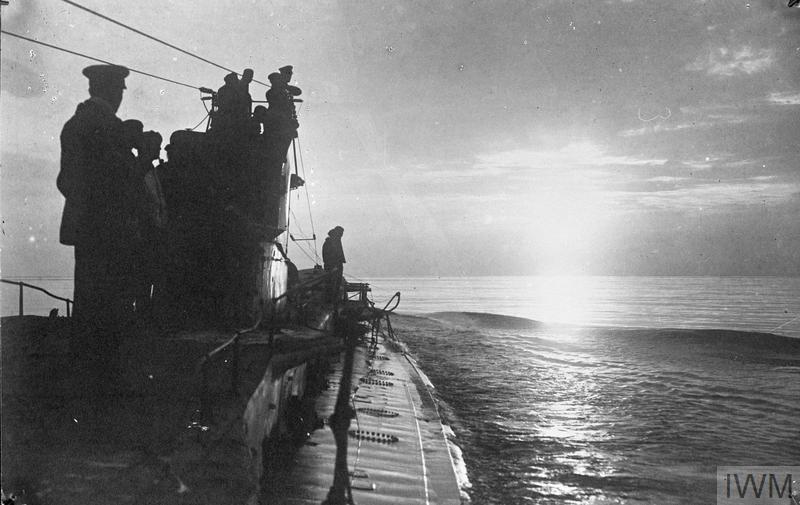It lurks in the depths, blind in the complete darkness below, but hearing every little sound around. Above it – a troop transport with two thousand souls on board, praying to make it across the Mediterranean, to live another week, another day. Another hour. Then an explosion tears the ship’s hull to shreds, a frightful gash of jagged metal letting in tons of water each second, until…silence. The satiated beast sails through the drowned bodies, off to its next kill.
The German U-35 was the deadly pinnacle of early submarine warfare. With 220 sunk ships in the Great War, she remained one of the most successful U-boats in history. But when was this new breed of merciless assassins born?
Submersible or Submarine – Ask Alexander the Great

As with the historic roots of almost anything, the key question is where to begin. And yes, Aristotle did once report of Alexander’s use of glass diving bells in 332 BC, but these were technically submersibles, due to their lack of independent propulsion. Just like nearly two millennia later, Dutchman Cornelius van Drebbel built the first navigable, oar-powered submarine, but like so many great inventions, this one too was ahead of its time and sank into obscurity before it was ever used.
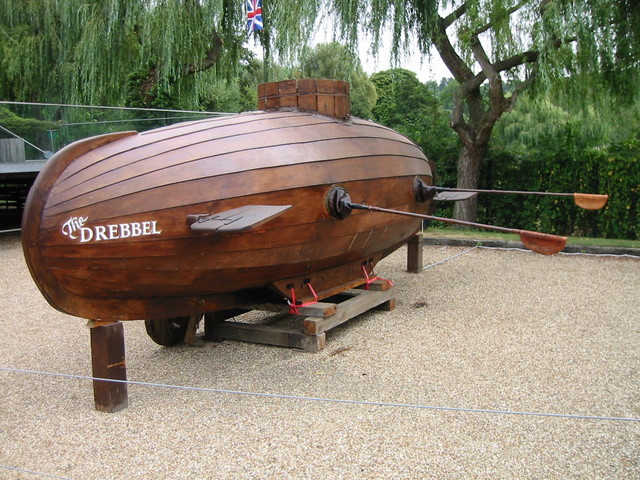
Hence, to put things in the right context, our dive in history will examine the turbulent period between the American Civil War and World War I, when submarines were first commissioned by navies and entered active military service.
Clear the bridge and take her down, shall we?
The United States – But Which Ones?
The first notable step towards combat-capable submersibles was made on the North American continent with the construction and deployment of the Turtle. Strictly speaking, this was not the first US submarine, as David Bushnell’s one-man capsule was launched in 1775, when the Thirteen Colonies were still a rebellious dominion of the British Empire. But regardless of technicalities, the foundations were laid, and the newly independent country did not take too long to develop its first proper submarines. Two of them, in fact.

By the time this happened, the United States were not so united anymore – 1861 saw the first battles between the Union and the Confederacy, and, as the Civil War escalated, so did both sides’ efforts to build a superior navy.
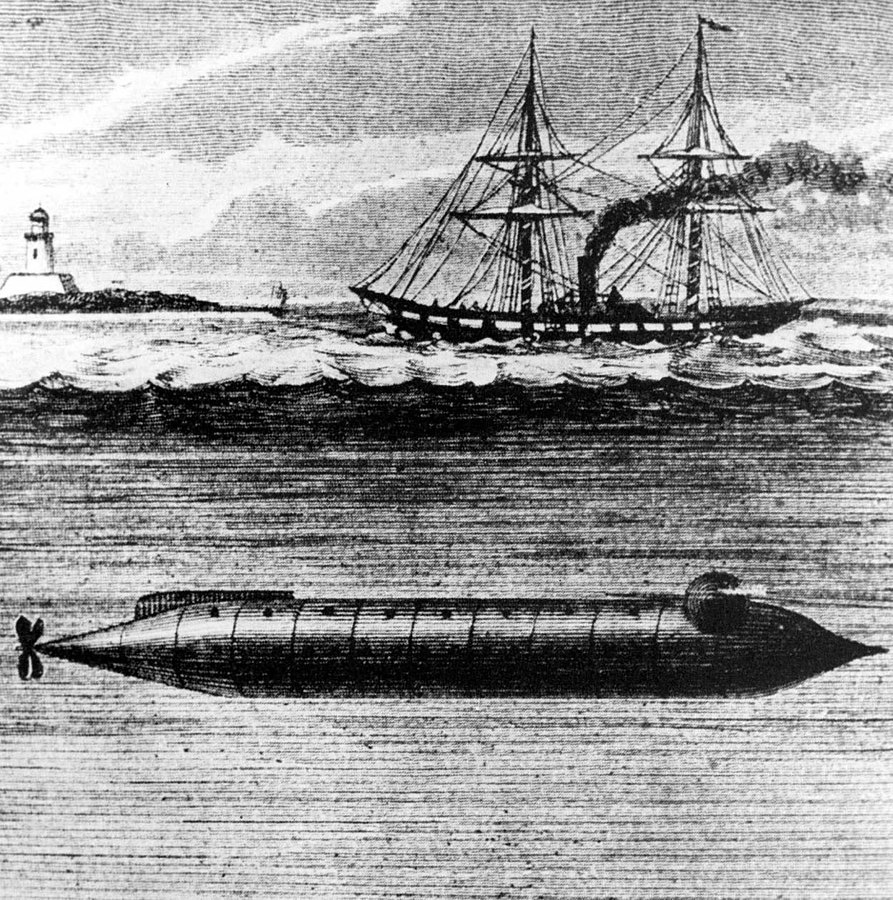
In 1862, the South was one step ahead with its new iron-clad battleship Virginia (formerly the USS Merrimack frigate), but the North responded just months later by launching the USS Alligator – a hand-propelled submarine, with an iron hull and water-tight compartments. An air pump provided continuous supply of fresh air, filtering it through a limewater tank to absorb carbon dioxide. The vessel had an innovative airlock, allowing the deployment of a diver-saboteur to install a mine onto a ship’s hull and return to the boat, detonating the explosive through electrical wires.
But the enemy had to wait, as the Alligator’s first battle was with nature. On their way to South Carolina, the submarine and its tow-ship USS Sumpter sailed into a heavy gale, and despite the crew’s persistence throughout the day, the gunboat began taking too much water. In a life-or-death dilemma, the men cut the towlines to save the Sumpter, and the Alligator was lost at sea.

Despite the South’s defeat, their first attempt at submarine warfare was more successful, though at higher human cost. Following the trials of two pilot projects – the Pioneer and the American Diver – Horace Hunley and James McClintock launched their third and most advanced submarine, the Hunley. As efforts against the Union blockade intensified, the Confederate Army requisitioned the vessel and deployed it at Charleston Harbor. It was the first-ever successful submarine attack against a warship.
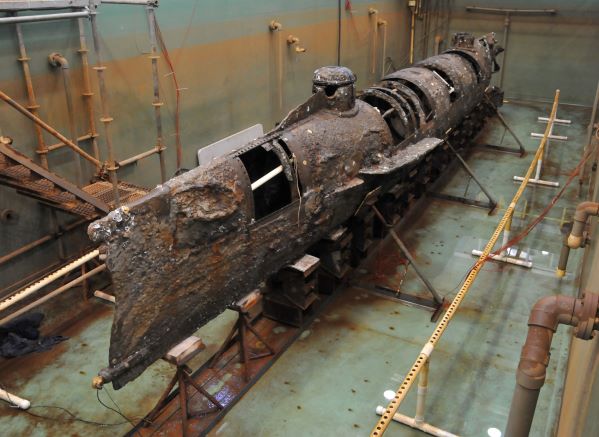
On the night of 17 February 1864, the watchkeeper of the USS Housatonic scanned the darkness for signs of torpedo boats. But that night, the danger lurked beneath the surface – the Hunley made its silent approach toward the steam-powered sloop, carrying a single spar torpedo on an external metal rod. Did the submariners know this would be a suicide mission, or did they still mumble their prayers as the bomb neared the sloop’s wooden hull? A savage blast tore through the night, and before anyone knew what was happening, the Housatonic sank to the bottom of the sea. So did the Hunley, together with its entire crew of eight.
In August 2000, a team of archaeologists and divers excavated the legendary Confederate submarine from the bottom of the sea. After an extensive restoration, it is now exhibited at the Warren Lasch Conservation Center in Charleston, South Carolina.
Haute Technologies, Made in France
To anyone familiar with Jules Verne’s Twenty Thousand Leagues Under the Seas, the French Navy’s first submarine Plongeur would seem strangely reminiscent of Captain Nemo’s epic vessel. This is not a coincidence – the author was meticulously acquainted with what was then the world’s most advanced submarine technology.

Built by the Rochefort Arsenal in 1863, the Plongeur was the first mechanically powered submarine, equipped with an astounding 60kW compressed-air engine and 23 compression tanks. The long list of innovations also included a watertight lifeboat, ejected from inside the submarine – just like Captain Nemo’s Nautilus. But despite its space-age design, all this equipment made the Plongeur large and somewhat clumsy at 43 meters length and 380 tons of displacement, which allowed dives no deeper than 10 meters.

Whether it was the lack of fitting conflicts in the next decade, or perhaps because the Plongeur came ahead of its time, it never saw action before its retirement in 1872, when the Navy turned it into a water tanker. But its memory, kept alive by the tale of Captain Nemo, fueled the imagination of generations to come.
Peru Shines Through
Maritime history is full of surprises, and “surprise” was a mild way to describe the Chilean Navy, when they scrambled to hide their fleet from a Peruvian secret weapon. The weapon in question was Federico Blume Othon’s Toro Submarino, a cutting-edge gasoline submarine, armed and ready for action.
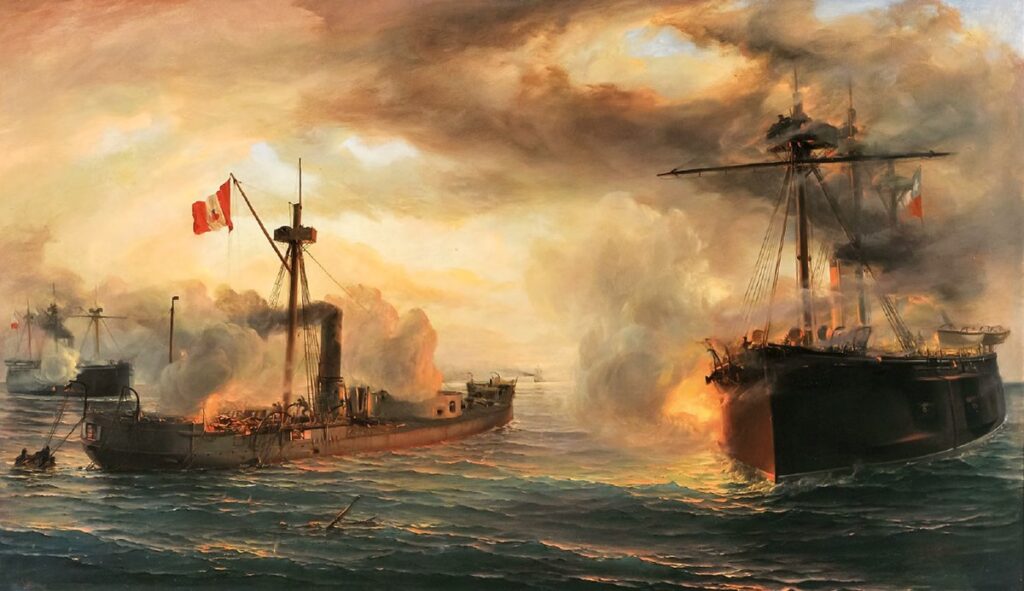
In 1879, the War of the Pacific flared up between Chile and a Peruvian-Bolivian coalition, with the initial battles taking place mostly at sea. A month into the fighting, as Peru lost one of its two main battleships, someone in Lima remembered a curious inventor by the name of Othon and his intrepid submarine design. With the Peruvian Navy headed towards compete annihilation, decisions were made fast, and Othon was able to complete his boat in just four months.
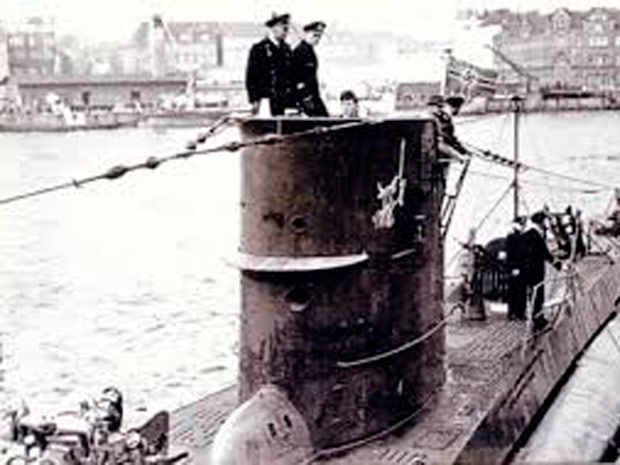
With its combined gasoline-electric propulsion, the Toro Submarino reached 4 knots when submerged at its maximum depth of 22 meters. Diving was carried out with ballast tanks, while the air-supply and circulation system utilized a snorkel, air fans, and ventilation tubes. The Toro’s first mission was to sink an enemy frigate near San Lorenzo Island, but thanks to a Chilean spy in the Peruvian Navy, the targeted vessels were ordered to reposition in the last moment.
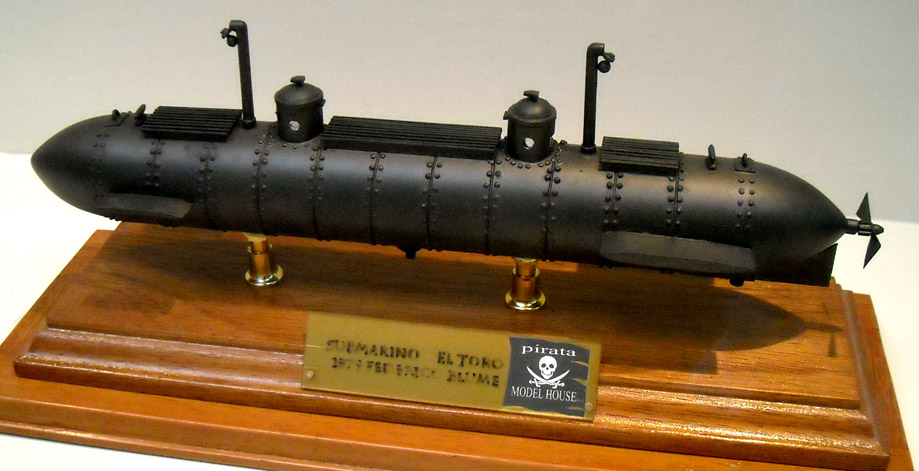
As Chilean forces headed toward the Peruvian capital in 1881, the Toro Submarino was scuttled together with the rest of the fleet. It took more than three decades until another South American navy commissioned a U-boat.
Dolphins Live Long
For the standards of its time, the first Italian submarine had an unusually long and fulfilling career of almost quarter of a century. Laid down in 1980, the Delfino was only commissioned by the Regia Marina in 1985, after numerous trials off the coast of La Spezia.
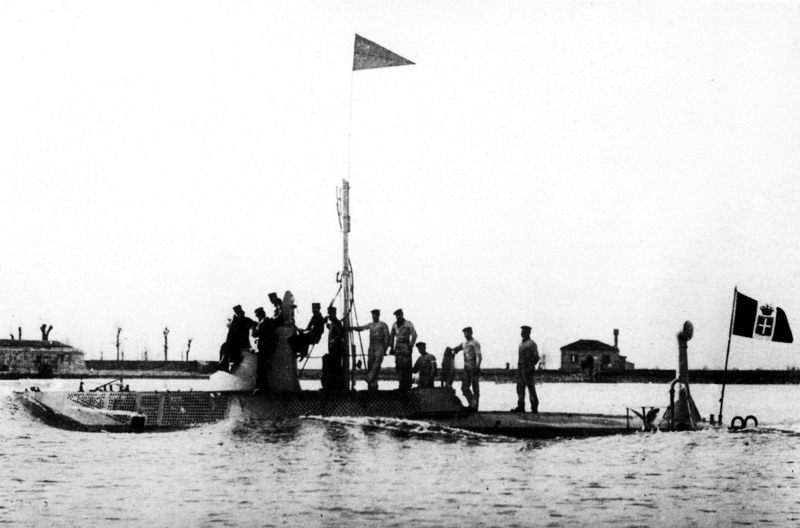
A length of 24 meters and 95 tons of displacement was not too bad for the period, but the modest Savigliano electric motor could only propel the Delfino to 6 knots maximum cruising speed. This shortcoming was rectified in 1904, when a FIAT petrol engine joined the electric motor, doubling the cruising speed and increasing the range six times. The design of the boat was nothing short of experimental – it had an additional rudder at the stern, as well as two vertical propellers to help dive and surface.
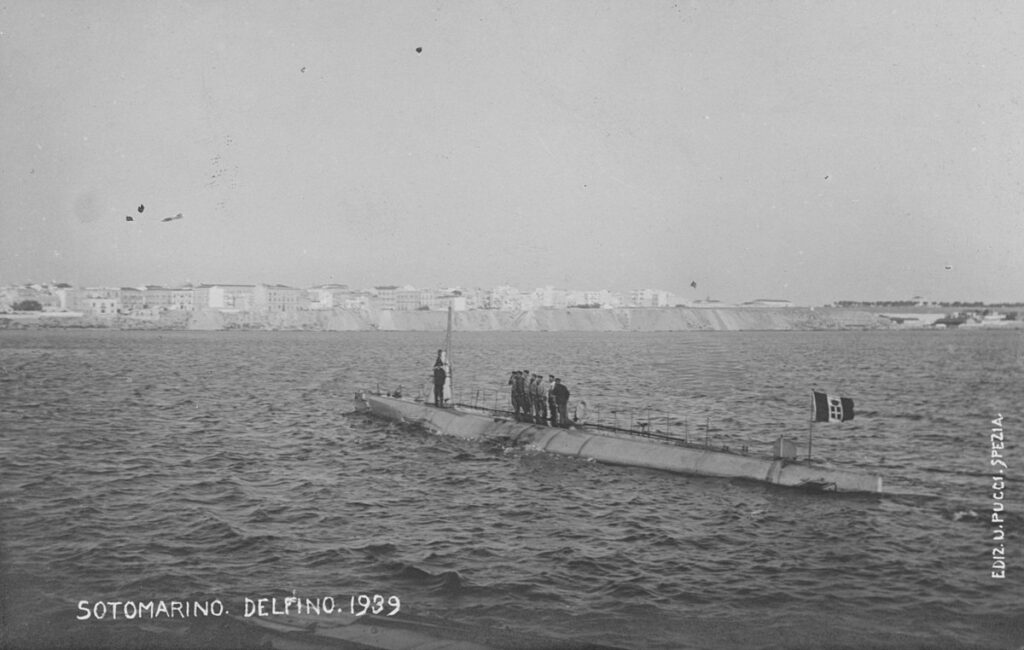
Outliving most of its contemporaries, the Delfino not only helped train generations of submariners but also saw action in the Great War, patrolling the Adriatic all the way until 1919.
A Battle with Bureaucracy
The late 19th century was an era of intrepid geniuses, and Spanish inventor Isaac Peral earned his place among them. Sailor, physicist, mathematician, astronomer, electric engineer – he was the right man to design and build the Armada’s very first submarine. Bur the road was long and bumpy – Peral began his study on submersible torpedo boats in 1884, enduring five long years of technical trials and political maneuvering before his boat came out of the Carraca Arsenal.

Official records reveal that Peral even built a special insulated chamber to simulate onboard air supply with limited circulation. Of the six people involved in the experiment, five withstood the harsh conditions longer than five hours, demonstrating to the admirals that underwater operations could be carried out without risk to the crew.
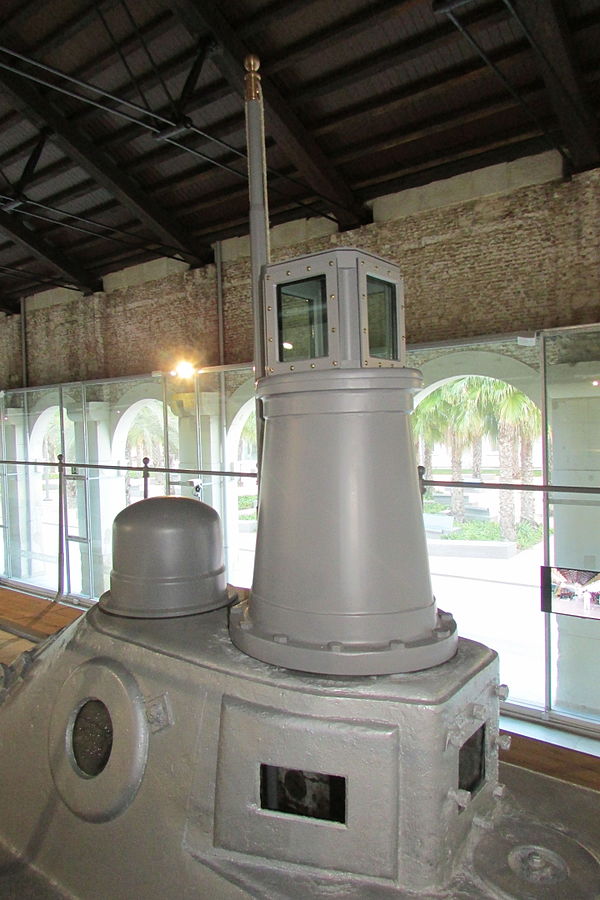
The boat was 22 meters long and displaced 85 tons in full immersion, with two electric motors supplying 60hp to the twin propellers. On paper, the 30-ton battery could secure enough electricity for 396 miles of slow cruising with only one motor running, but real-life trials showed limited autonomy and attacking capabilities. Nevertheless, the boat was innovative in several aspects: a non-magnetic bronze compass at the top of the turret ensured continuous navigation, while Peral’s own patented underwater searchlight provided 150 meters of visibility.
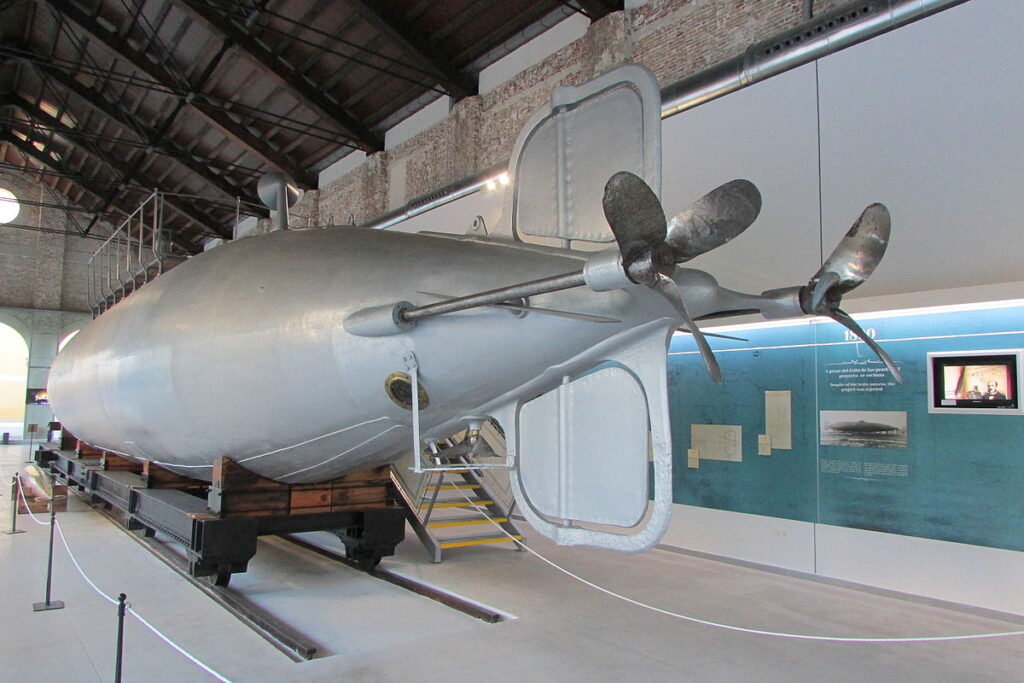
But as it often happens, red tape stood in the way of progress. Even though the Navy asked Peral to design and build a second submarine, they managed to entangle him in administrative complications, leading to his withdrawal from the project and the decommissioning of his boat. The embittered inventor retired from active service, pursuing a private career as an entrepreneur and electric engineer.
Steampunk to the Max
All you Victorian buffs out there, pay attention, as this is the moment when a Swedish entrepreneur teams up with a British priest to design the ultimate steampunk contraption.
Thorsten Nordenfelt, already famous for inventing a surreal, organ-like machine gun, nourished ambitions both on dry land and beneath the waves. In the early 1880s’, he met British clergyman and inventor Reverend George Garrett, with whom he built the Nordenfelt I – a steam-powered submarine, made of wrought iron frames and clad with iron plates. The design was partially based on Reverend Garrett’s past project, the Resurgam.
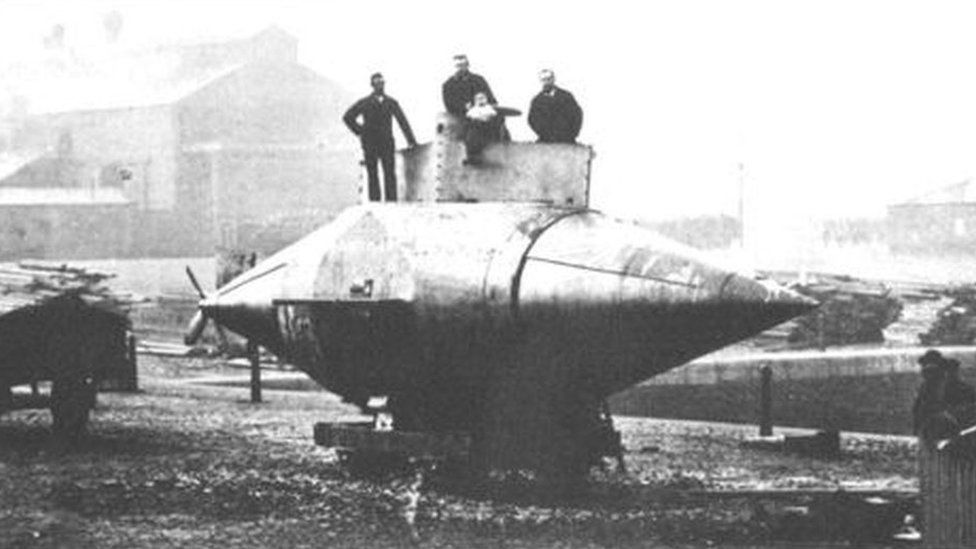
The Nordenfelt’s cruising range reached 240km, propelled on the surface by a 100 hp Lamm fireless locomotive engine. It submerged via vertical propellers instead of ballast tanks, utilizing the residual heat for propulsion with the help of two hot-water reservoirs. The boat’s deadly arsenal included one torpedo and, unsurprisingly, the formidable Swede’s very own machine gun.
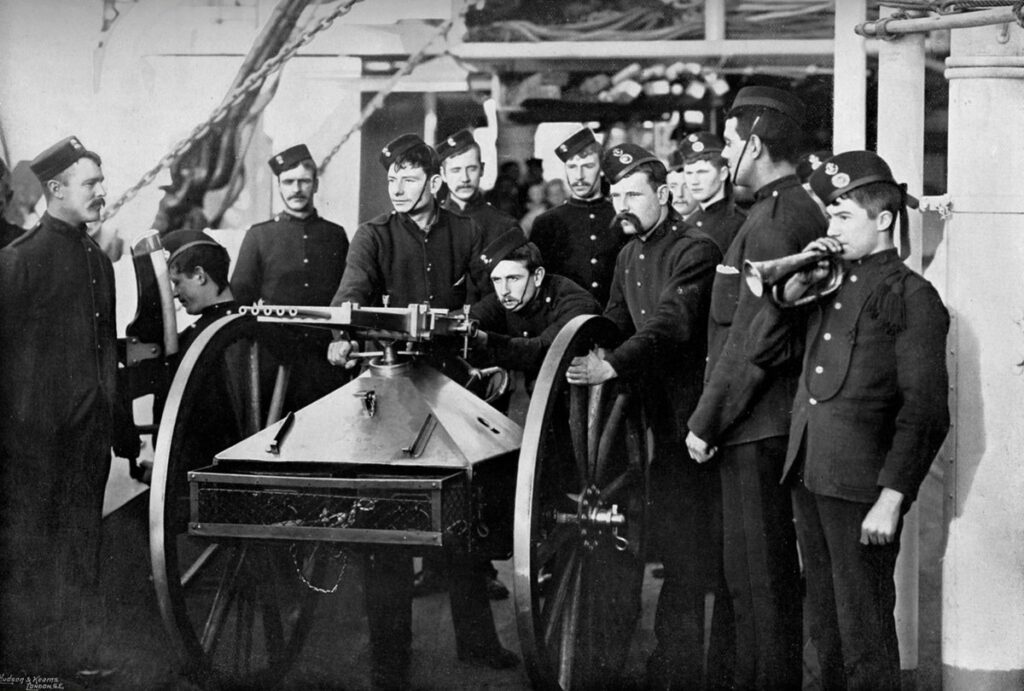
Adept in European political games, Nordenfeld convinced the Greek government to purchase the submarine for 9,000 pounds sterling, while at the same time promising a more advanced model to Greece’s mortal enemy, the Ottoman Empire. The much-larger Nordenfelt II and III were delivered to Constantinople in 1886 and 1887, receiving upon arrival the imperial names Abdul Hamid and Abdul Mecid.
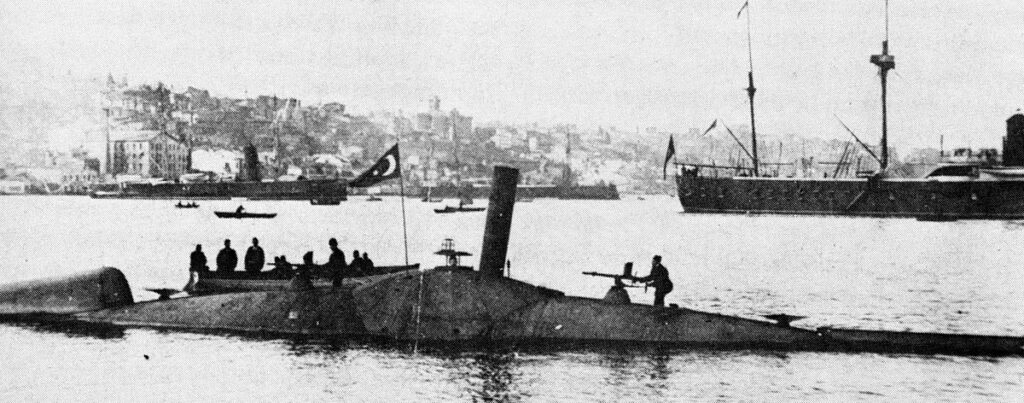
To the disappointment of both Greeks and Ottomans, none of Nordenfelt’s boats proved combat capable. They all suffered from similar balance problems, never able to keep on an even keel, which led to more than one embarrassing situation. The Abdul Hamid is credited as the first submarine in history to fire a torpedo when fully submerged, but once the historic torpedo left the tube, the recoil turned the boat over and sank it stern-first. Nevertheless, the crew managed to bring it up to the surface, to the great relief of all dignitaries gathered around to watch the spectacle.
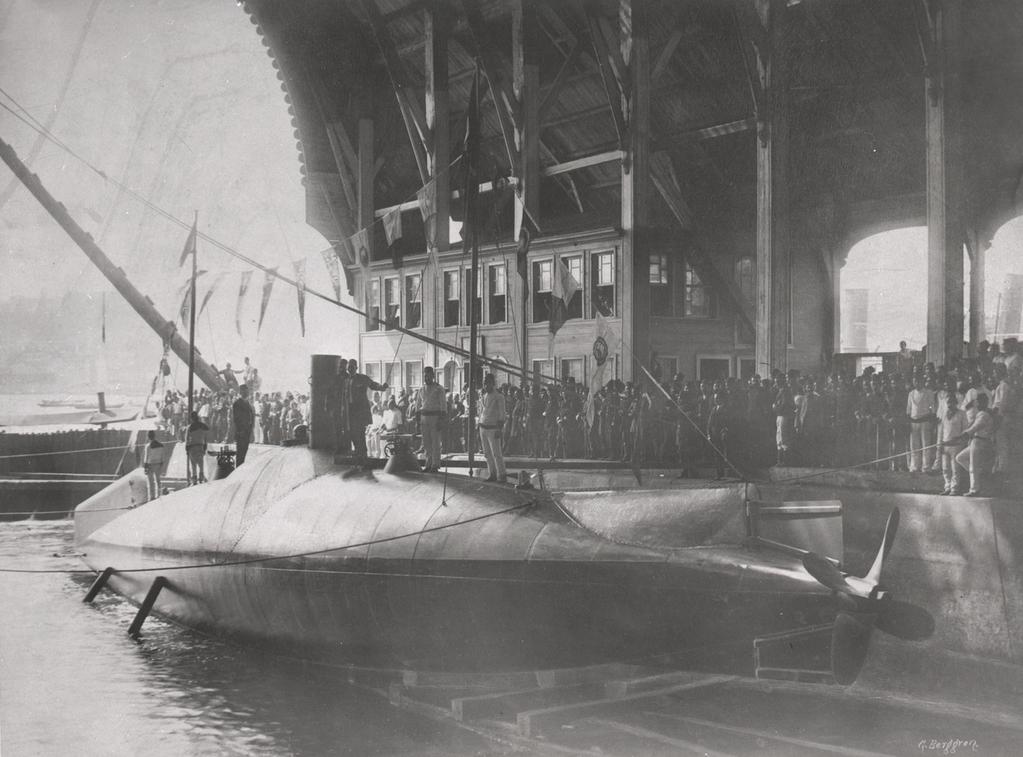
Talented arms dealer that he was, Nordenfelt managed to sell his fourth creation to the Russians, just in time before word got around that Garrett’s design was a lemon. A blessing in disguise perhaps, the Nordenfelt IV sank in a storm on its way to St. Petersburg, and the Tsar had to wait a few more years for his first U-boat.
You, on the other hand, only need patience until next week!
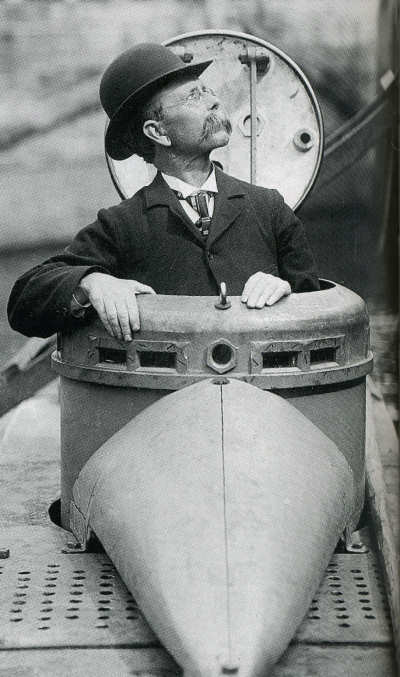
More fascinating submarine stories will emerge in Part 2 of this series, including:
- The broken leg that sparked a tech revolution
- The submarine that crossed Siberia…twice
- A Japanese commander’s farewell letter from the bottom of the sea
- The Irish republican who sold Britain its first submarine
Subscribe for maximum geek-entertainment.
The Shipyard

